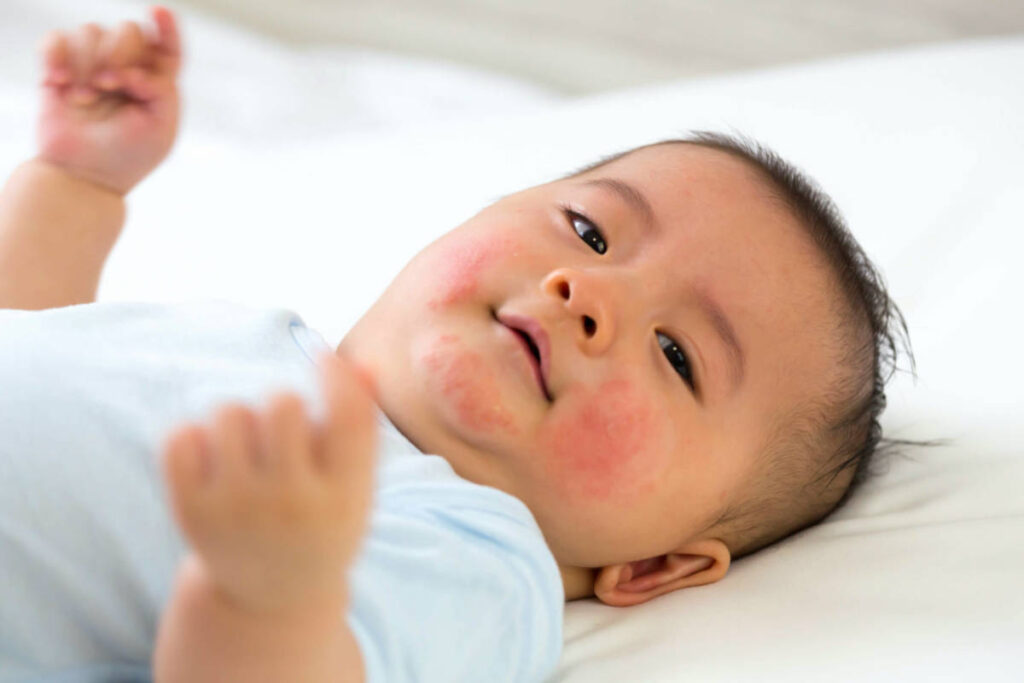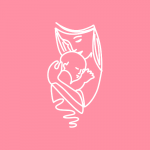What causes hives in kids? Kids can have a tough time dealing with hives, sometimes known as urticaria. These pesky red welts of itching skin typically last for days or even weeks, yet may be signaling an underlying medical concern – so if your child is afflicted it’s important to keep an eye out!

As a parent, knowing how to keep your kid’s hives in check can be tricky. But with the right information and treatment plan, their itchy outbreaks won’t have them scratching their heads (or other body parts)! In this article, we’ll cover what can cause hives in kids – plus provide you with tips on treatments and prevention measures!
Why are parents should know hives in kids important?
Parents, if your little one is sporting hives it may be more than just a harmless allergic reaction. While the occasional hive can arise from something like an outdoor irritant or food sensitivity, sometimes they are indicative of a deeper medical issue – so don’t take any chances and call for help!
What Causes Hives in Kids?
Allergens that cause hives in kids
For children, what might appear like a mild rash is actually an alarming symptom of potential allergies. Common culprits include milk and eggs as well as anything that contains wheat or soy such as bread and pasta – even peanuts! It’s vital to identify the precise allergen so it can be avoided in the future, but if your little one does suffer from hives after consuming something then make sure you have an Epi-Pen on hand in case they experience any further symptoms – swelling or difficulty breathing being red flags for emergency intervention.
Stress that
If your child is covered in hives and you’re not sure why it’s likely a case of stress-induced blemishes. From anxiety to depression, any type of pressure can cause kids’ skin to break out – plus there are other potential culprits like particular medications or food allergies. Before blaming bad behavior on the breakout (or anything else), make sure that you check with your doctor first!
Infections
Little ones suffering from hives? Chances are, it’s due to a respiratory infection like the common cold or flu. But strep throat, mono, and Lyme disease can also be culprits! Allergies -like reactions to food, pollen, and pets- could also cause outbreaks of those pesky red bumps in your child. If you suspect an underlying cause get thee on over to that friendly family doc pronto for diagnosis!
Environmental
Kids can sometimes have unexpected reactions to their environment. Pollen, pet dander, and food allergies are some of the usual suspects – but it may surprise you that stress or infections could also be playing a role in causing those pesky hives. If your child is showing any signs, don’t hesitate to chat with them about what’s happening so you can determine if there is an environmental factor at work and make adjustments accordingly!
Medications
Struggling with hives in your little one is no fun, but there are plenty of treatments available. As a parent, you have the option to go for over-the-counter medications such as ibuprofen and acetaminophen or obtain prescriptions from the doctor like prednisone or azathioprine. Ultimately it’s important that an expert weigh in on which medication would bring about relief best!
Symptoms of Hives in Kids
Itching
The tell-tale sign of hives is the itch and that’s just one symptom. Other common signs to watch for include redness, swelling, burning, or stinging sensations on your skin – all good reasons why you shouldn’t ignore this condition!
Is your body feeling a little off balance? Watch out for symptoms such as reddening of the skin, swelling, and pain. If it’s all adding up in an “I-should-go-to-the doctor” kind of way, act fast – don’t wait around!
Swelling
Hives are a fairly common affliction in kids, which usually present as swelling of the face, neck, and trunk. In rare cases, it may also show up on their hands and feet. We might never know why exactly this uncomfortable reaction occurs but with some over-the-counter medicine, relief can be found! If more intense help is needed antihistamines or even other medications prescribed by your doctor could do the trick too.
Redness
Kids with hives may feel like their skin is under attack! It usually starts as redness and swelling that can range from mild to severe, often occurring within minutes or hours after exposure to a potential allergen. In some cases, these symptoms could last for days – not fun at all!
Suspect your child may be allergic to something. The best way to find out is by getting an antibody blood test. If it turns out allergens aren’t the cause, a doctor can give them antihistamines or corticosteroids that provide instant relief from symptoms – so you won’t have back-to-school blues!
Blisters
Kids can encounter an array of nasty symptoms when it comes to hives, from uncomfortable blisters popping up all over their skin – usually on the face, neck, and chest – to uncontrollable itching. Blistering isn’t just unpleasant; if they rupture, your little one may experience some real pain. So use common sense: If you think your child’s facing a hive dilemma then take action by picking up that phone and dialing in the doctor!
Diagnosis of hives in kids
Does your child have the itchy, red welts of hives? To find out for sure and determine how to successfully treat them, a physical exam is necessary. This could involve examining the medical history of both you and your little one as well as taking an even closer look at their skin with a biopsy. If current treatments are not effective then allergies may be in play – so blood testing can give further insight into this possibility too!
Tests for hives in kids
Hives can be more than just an annoying rash– they could signal a looming health issue. If your child has hives, or if the hives don’t seem to be going away on their own, book them in for a visit with the doctor ASAP! And if you think it was due to contact with some nasty stinging insect such as bees and wasps – get outta there quick-like and call the poison control center before things go south real fast.
Treatment
Antihistamines
With the wide variety of antihistamines out there, parents can rest assured that their children’s hives will be taken care of in no time – but it helps to know which ones are best for them.
- Allergy-prone kids rejoice! Hives don’t stand a chance against cetirizine, loratadine, and fexofenadine – three of the most powerful antihistamines on the block. Don’t let pesky histamine attack your little one again; these medications stop it in their tracks to help keep hives at bay.
- With hives affecting children, it’s important to consider a variety of antihistamines—from promethazine and diphenhydramine to others. However, no single treatment works for every child as everyone reacts differently.
- For some kids, an itchy hive-filled life requires several medications to keep their skin calm and collected.
Corticosteroid creams
Got a hive-y problem with your little one? Worry not – corticosteroid creams can help reduce the inflammation and swelling associated with hives in children. This topical ointment is usually effective, so you don’t have to worry about additional medications!
Natural remedies
Treating hives in children can be a natural breeze! There are plenty of alternative remedies to relieve the itch and discomfort, such as honey or cooling compresses. In addition, certain herbs have been used for centuries – like basil and chamomile – that may provide relief from these pesky skin eruptions. So don’t let your child suffer more than they need to; take advantage of Mother Nature’s healing powers today!
Take a hot bath to soothe away inflammation and hives. Fill your plate with an array of foods for better control over those pesky problems. OTC medicine can help take the edge off, but why not try something more natural? Garlic is known to reduce inflammation fast – no prescription necessary!

Prevention
Reduce exposure to allergens
Ward off pesky allergies in your kids by reducing their exposure to common allergens! From airborne particles floating through the air, dust hiding out on surfaces, and invisible spores lurking around every corner – create a safe haven for your children free of trigger-happy irritants. A few simple steps taken towards prevention could be worth an itchy red aftermath later down the line.
Manage stress
From exams to first dates, stress is a normal part of life for kids – but too much can wreak havoc on their skin. To help prevent breakouts caused by excess tension, create sensible boundaries and provide support when your child needs it most. Oh yeah: getting plenty of shuteye and chowing down with well-balanced meals are important pieces to the puzzle as well!
Use medications only as needed.
When it comes to treating allergies in your kids, prevention is key! While creating a safe environment and establishing good hygiene habits are important ways to reduce hives breakouts, another great way to protect them from allergic reactions is using medication judiciously. If you suspect an allergy coming on but aren’t quite sure yet – hold the bottle tight & wait until symptoms become more severe before administering medicine.
Conclusion
If your child develops a sudden outbreak of itchy, raised welts on their skin, don’t panic – they are likely dealing with hives. It is important for parents to know the possible causes in order to take steps toward prevention. From seasonal pollen and dust mites to food allergies – there could be several triggers out there! However troublesome this condition may seem, visiting your healthcare provider can lead you down the right path when it comes to recommended treatments.
As a parent, helping your child live their best life is important! To do that you need to know how to prevent and treat hives. Share these tips with anyone who could benefit – let’s make sure all our kids stay happy and healthy! You are also welcome to visit our blog section for more tips.
Reading suggestions:


